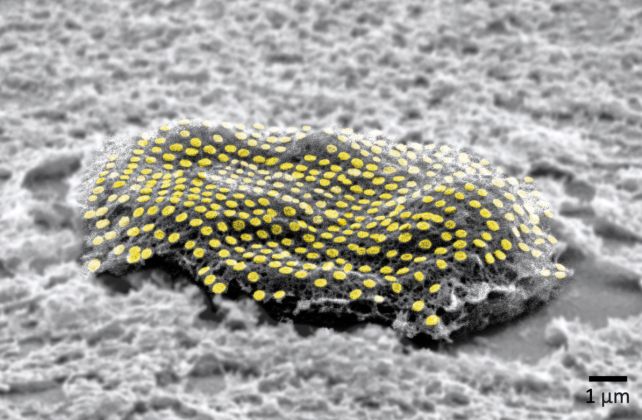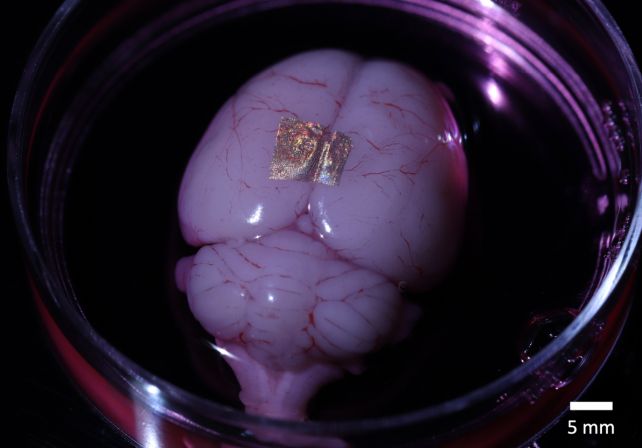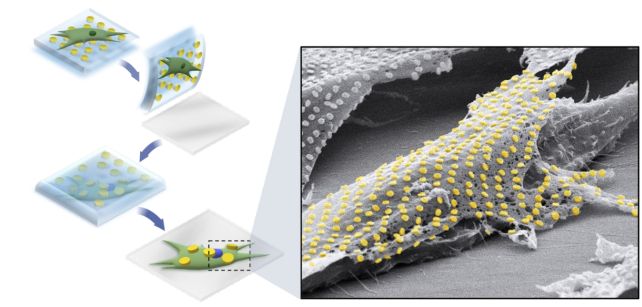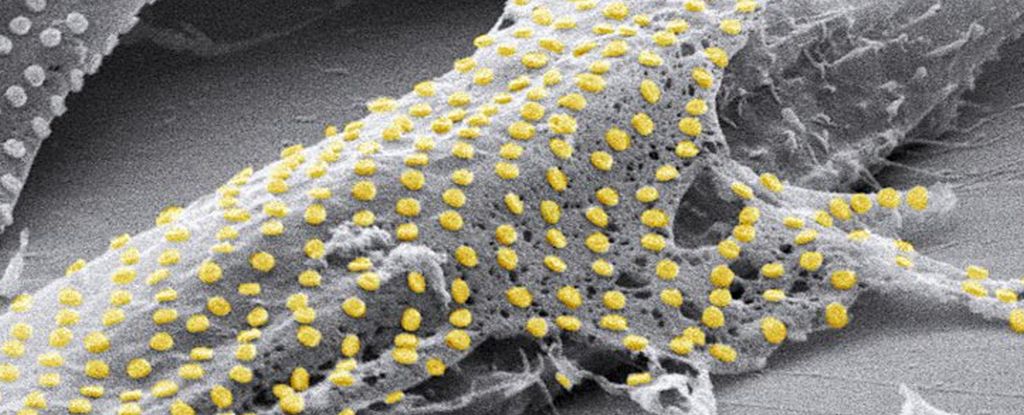Products You May Like
It may seem like the ultimate in bling, but a new technique for tattooing gold onto living tissue is a step towards integrating human cells with electronic devices.
By building on a fabrication technique called nanoimprint lithography, scientists printed living mouse embryo fibroblast cells with patterns of gold nanodots and nanowires. This, they say, is a significant first step towards adding more complex circuitry.
And it’s not even just because cyborgs are cool. According to the scientists who developed it, led by engineer David Gracias of Johns Hopkins University, the technique could have incredible health applications.

“If you imagine where this is all going in the future, we would like to have sensors to remotely monitor and control the state of individual cells and the environment surrounding those cells in real time,” Gracias says.
“If we had technologies to track the health of isolated cells, we could maybe diagnose and treat diseases much earlier and not wait until the entire organ is damaged.”
Engineers have been looking for a way to integrate electronics with human biology for some time, but there are significant roadblocks. One of the biggest hurdles is the incompatibility of living tissue with the manufacturing techniques used to construct electronics.
Although there are ways to make things small and flexible, they often use harsh chemicals, high temperatures, or vacuums that destroy living tissue or soft, water based materials.

Gracias and his team based their technique on nanoimprint lithography which is pretty much what it sounds like: using a stamp to imprint nanoscale patterns into a material. Here, the material is gold, but that’s just the first step of the process. Once the pattern has been made, it has to be transferred, and adhere, to living tissue.
The researchers first printed their nanoscale gold onto a silicon wafer coated in polymer. Then, the polymer was dissolved so that the pattern could be transferred to thin films of glass, where it was treated with a biological compound called cysteamine, and coated with a hydrogel.
Then the pattern was removed from the glass and treated with gelatin, before being transferred to a fibroblast cell. Finally, the hydrogel was dissolved. The cysteamine and the gelatin helped the gold bond to the cell, where it remained and moved with the cell for the next 16-hours.
They used the same technique to attach gold nanowire arrays to ex vivo rat brains. But the fibroblasts, they say, represent the most exciting result.

“We’ve shown we can attach complex nanopatterns to living cells, while ensuring that the cell doesn’t die,” Gracias says.
“It’s a very important result that the cells can live and move with the tattoos because there’s often a significant incompatibility between living cells and the methods engineers use to fabricate electronics.”
Because nanoscale lithography is relatively simple and low-cost, the work represents a way forward to developing more complicated electronics such as electrodes, antennas, and circuits, to be integrated not just with living tissues, but hydrogels and other soft materials that are incompatible with harsher fabrication methods.
“We expect this nanopatterning process, combined with various classes of materials and standard microfabrication techniques like photolithography and e-beam lithography,” the researchers write, “to open opportunities for the development of new cell culture substrates, biohybrid materials, bionic devices, and biosensors.”
The research has been published in Nano Letters.
